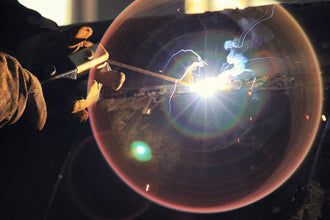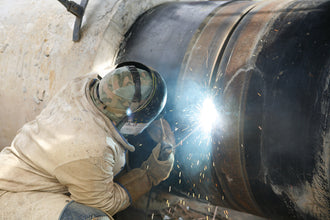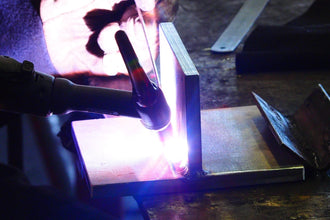
In the world of metal fabrication, the plasma cutter stands as a symbol of raw power and precision. From seasoned professionals in large-scale workshops to passionate DIYers in home garages, this tool has revolutionized how we cut through conductive metals. However, owning a plasma cutter and mastering it are two very different things. Many users experience less-than-ideal results—beveled edges, excessive dross, warped metal, or premature consumable wear—without understanding the root cause.
The difference between a ragged, problematic cut and a clean, professional-grade result lies in the details. It's a symphony of correct settings, proper technique, and meticulous maintenance. This comprehensive guide is designed to be your masterclass in plasma cutting. We will delve deep into 15 Tips To Improve Your Plasma Cutting Results, transforming your approach and elevating the quality of your work from amateur to expert. Whether you are working with thin sheet metal or thick plate, these actionable insights will save you time, money, and frustration.
Understanding the Fundamentals: The Science Behind the Spark
Before we jump into the practical Tips To Improve Your Plasma Cutting Results, it's crucial to grasp the basic principles of how a plasma cutter operates. Understanding the "why" behind the "what" will make the tips far more intuitive and easier to remember.
Plasma cutting harnesses the fourth state of matter—plasma. By forcing a gas (like compressed air or nitrogen) through a constricted nozzle at high pressure, an electric arc is generated from the torch to the workpiece. This superheats the gas, turning it into a plasma stream that is electrically conductive. This plasma stream moves at incredible speed and temperature (up to 45,000°F), melting the metal and blowing the molten material away, creating the cut.
The entire system relies on a delicate balance of:
-
Gas Pressure & Flow: The lifeblood of the process.
-
Amperage (Current): The power behind the cut.
-
Cut Speed: The rate of movement.
-
Consumables: The components that focus and direct the energy.
Mastering this balance is the key to implementing all subsequent Tips To Improve Your Plasma Cutting Results.
Category 1: Machine Setup & Consumable Management
The foundation of a great cut is laid long before the arc is ever struck. Proper setup and component care are non-negotiable for achieving superior Plasma Cutting Results.
Tip 1: Select the Correct Amperage and Nozzle Size for the Material Thickness
This is the single most important factor in achieving clean cuts. Using too high or too low amperage is a primary source of poor cut quality.
The Goldilocks Principle of Amperage
-
Too High (Over-amping): Leads to a wide, ragged kerf (the width of the cut), excessive top-edge rounding, and increased dross (the re-solidified molten metal stuck to the bottom of the cut). It also drastically shortens consumable life.
-
Too Low (Under-amping): Fails to penetrate the material fully, causing the arc to "ricochet" off the surface, creating a poor-quality cut and potentially damaging the consumables as the molten metal splashes back onto the nozzle.
CUT-40AIR Built-in Air Compressor Plasma Cutter Inverter Plasma Cutting Machine
Actionable Tip: Always refer to your plasma cutter's manual for its cut capacity and recommended settings. A good rule of thumb is to set your amperage to the level that matches your material thickness, or slightly above for thicker materials. Use a smaller amperage nozzle for thinner metals and a higher amperage nozzle for thicker stocks. This is a fundamental step among our Tips To Improve Your Plasma Cutting Results.
Tip 2: Maintain and Monitor Your Air Supply Relentlessly
Clean, dry, and properly pressurized air is the cornerstone of the plasma cutting process. Moisture or oil in the air line is a silent killer of cut quality and consumable health.
The Enemies: Moisture and Oil
-
Moisture: When compressed, air releases moisture that contaminates the plasma arc. This causes porosity in the cut edge, irregular arc behavior, and rapid oxidation of the electrode and nozzle.
-
Oil: Oil vapor from the compressor will carbonize on the electrode, creating a black, crusty coating that prevents proper electrical contact and leads to failure.
Actionable Tip: Invest in a high-quality in-line air filter/dryer and drain your compressor tank before every use. Check the pressure regulator on your machine to ensure it matches the manufacturer's specification (typically between 90-120 PSI for many units). Consistent, clean air is one of the most impactful Tips To Improve Your Plasma Cutting Results.
Tip 3: Conduct a Thorough Pre-Cut Consumable Inspection
The consumables—electrode, nozzle, swirl ring, and shield cap—are the heart of the torch. Worn or damaged consumables cannot produce a focused, stable plasma arc.
Reading the Signs of Wear
-
Electrode: Look for a deep pit in the hafnium insert. Once the pit reaches a depth of 0.060 inches or more, it should be replaced. A shiny, silver-colored hafnium is good; a black, sooty, or cracked one is bad.
-
Nozzle: The central orifice should be perfectly round and clean. Any sign of ovality, slag buildup, or metal spatter means the arc will not be concentric, leading to beveled cuts.
-
Shield Cap: Check for excessive wear or a melted "mouse hole" on the end, which indicates contact with the workpiece or splashback.
Actionable Tip: Make it a habit to inspect your consumables before starting a new job. Keep a spare set on hand to avoid downtime. Proper inspection is a simple yet powerful one of the Tips To Improve Your Plasma Cutting Results.
Tip 4: Ensure a Secure and Proper Work Ground (Earth) Clamp
The plasma circuit is not complete without a solid return path to the machine. A poor ground connection is a frequent culprit behind an unstable arc, difficulty starting, and generally poor Plasma Cutting Results.
Actionable Tip:
-
Attach the ground clamp directly to the workpiece you are cutting. If that's not possible, attach it to a clean, bare metal section of your work table that is in direct contact with the workpiece.
-
Scrape away any paint, rust, or scale at the connection point to ensure metal-to-metal contact.
-
Ensure the clamp jaws are strong and clean, providing a firm grip.
Category 2: Cutting Technique & Movement
With the machine set up correctly, the next set of Tips To Improve Your Plasma Cutting Results focuses on your interaction with the tool. Your technique directly translates to the quality of the cut.
Tip 5: Master the Critical Cut Speed and Maintain Consistency
Cut speed is the dance partner of amperage. Getting it right is essential for a dross-free, square cut.
The Tell-Tale Signs of Incorrect Speed
-
Too Slow: Causes low-speed dross, a heavy, bubbly, easily removable deposit on the bottom of the cut. It also widens the kerf, increases heat-affected zone (HAZ), and can warp thinner material.
-
Too Fast: Causes high-speed dross, a thin, stringy, hard-to-remove bead. More critically, the arc lags behind the torch, resulting in a pronounced bevel where the top of the cut is narrower than the bottom, and it may fail to pierce through the material entirely.
-
Just Right: The arc is perpendicular to the workpiece, resulting in a clean, dross-free cut with parallel sides. You will hear a smooth, consistent "hiss" and see the sparks exiting directly downward through the material.
Actionable Tip: Practice on scrap material of the same thickness. Start too fast and slowly reduce speed until the sparks blow straight down through the kerf. Using a guide, like a straight edge or circle cutter, is one of the most effective Tips To Improve Your Plasma Cutting Results for maintaining consistent speed.
Tip 6: Maintain the Correct Standoff Distance
Standoff is the distance between the torch nozzle and the workpiece. Modern plasma cutters with drag shields are designed to be dragged directly on the material, which automatically maintains a perfect standoff. However, for non-drag cutting or CNC applications, this distance is critical.
Actionable Tip: If your torch does not have a drag shield, aim for a standoff of 1/8" to 3/16". Use a standoff guide or your pinky finger as a reference. Too close, and the nozzle will contact molten metal and be damaged. Too far, and the arc will widen and become unstable, increasing bevel and the risk of double-arcing.
Tip 7: Start with a Square-to-Workpiece Torch Position
The angle of your torch at the moment of piercing and during the cut dictates the bevel of the edge.
Actionable Tip: Always hold the torch so it is perfectly perpendicular (90 degrees) to the workpiece in both directions. A common mistake is to angle the torch in the direction of travel, which guarantees a beveled edge. For the straightest, squarest cuts, this is a non-negotiable part of your technique and a core element of our Tips To Improve Your Plasma Cutting Results.
Tip 8: Utilize a Guide for Straight Lines and Complex Shapes
Freehand cutting is a skill, but it is inherently imprecise. Relying on it for critical projects will lead to inconsistent Plasma Cutting Results.
Actionable Tip:
-
For straight lines, use a magnetic or clamped straight edge.
-
For circles, use a circle cutting attachment.
-
For complex shapes, create a template from non-combustible material like sheet metal or a high-temperature plastic. Tracing a template ensures perfect replication and smooth lines.
Tip 9: Perfect Your Piercing Technique
A bad pierce can ruin a workpiece and damage your consumables. The goal is to initiate the arc without splashing molten metal back onto the nozzle.
Actionable Tip:
-
For thin materials (< 1/4"), you can often pierce straight on.
-
For thicker materials, use a "pierce and pause" technique: position the torch at a 15-20 degree angle, start the arc, and then slowly rotate it to a vertical position after a second. This allows the arc to penetrate without excessive splashback. This advanced technique is a pro-level Tips To Improve Your Plasma Cutting Results.
Category 3: Material Preparation & Post-Processing
What you do before and after the cut significantly impacts the final outcome. These Tips To Improve Your Plasma Cutting Results focus on the entire workflow, not just the cutting moment.
Tip 10: Meticulously Clean the Workpiece Before Cutting
Cutting through rust, paint, or mill scale forces the plasma arc to waste energy burning through contaminants before it can even reach the pure metal. This leads to an erratic arc, poor edge quality, and toxic fumes.
Actionable Tip: Take a few minutes to grind, wire-brush, or wipe down the cutting path. A clean, shiny surface provides the most consistent electrical path and allows for a smooth, clean cut. This simple preparatory step is one of the most overlooked Tips To Improve Your Plasma Cutting Results.
Tip 11: Understand and Manage the Heat-Affected Zone (HAZ)
The intense heat of the plasma arc alters the metallurgical properties of the metal near the cut edge. This is the Heat-Affected Zone (HAZ). In some applications, a large HAZ can be detrimental.
Actionable Tip: To minimize the HAZ:
-
Use the lowest amperage that will effectively cut the material.
-
Use the fastest cut speed that still produces a clean, dross-free edge.
-
On CNC tables, use "thermal relief" cuts for intricate parts to dissipate heat.
Tip 12: Implement Effective Dross Management Strategies
Dross is often seen as a failure, but understanding its types helps you eliminate it.
Low-Speed vs. High-Speed Dross
As mentioned in Tip #5, identifying your dross type is the first step to eliminating it. Adjust your cut speed accordingly. For low-speed dross, speed up. For high-speed dross, slow down.
Actionable Tip: Sometimes, a small amount of dross is inevitable. It can often be removed easily with a chipping hammer or a flick of a grinder. On stainless steel or aluminum, a dross-free cut is often achievable with perfect settings and is a hallmark of excellent Plasma Cutting Results.

Tip 13: Support the Workpiece to Minimize Warping and "Kerf Lock"
Allowing the weight of the material to pinch the kerf can ruin a cut and be dangerous.
Actionable Tip: Use fire-resistant support blocks or a slat bed to keep the workpiece elevated. This allows the cut pieces to fall away freely without binding the torch ("kerf lock") and prevents the hot metal from warping as it cools. Proper support is a critical safety and quality tip among our Tips To Improve Your Plasma Cutting Results.
Category 4: Advanced Optimization & Pro-Level Tips
For those looking to push their results to a professional, CNC-level of quality, these advanced Tips To Improve Your Plasma Cutting Results will provide significant gains.
Tip 14: Fine-Tune Your Arc Voltage Height Control (for CNC Systems)
If you operate a CNC plasma table, the Arc Voltage Height Control (AVHC) is your most important setting after amperage and speed. It dynamically adjusts the torch height during the cut to maintain a consistent arc voltage, which is essential for contouring over warped plate or during long cuts.
Actionable Tip: Consult your CNC software manual. Properly setting the arc voltage (a proxy for standoff) is key. Too low a voltage value and the torch will run too close to the metal; too high, and it will run too far away, increasing bevel. Fine-tuning this for different materials and thicknesses is a game-changer for automated Plasma Cutting Results.
Choosing the right cutting machine can make a huge difference in your daily cutting results. For industrial-grade CNC use, we recommend the DoughtyWelder CUT-120.
CUT-120 HF Non-Touch Pilot arc Air Plasma Cutter CNC Cutting Machine
Tip 15: Use the Right Gas for the Job (Beyond Compressed Air)
While compressed air is versatile and cost-effective for mild steel, different gases can dramatically improve cut quality on specific materials.
-
Mild Steel: Air is standard. For high-quality cuts on thicker plate, a Nitrogen/Water or Nitrogen/Oxygen mix can offer a cleaner edge.
-
Stainless Steel & Aluminum: Using Nitrogen as the plasma gas and Water for shielding (or an Argon/Hydrogen mix for very thick plate) produces a near-laser quality, oxide-free cut edge.
Actionable Tip: If you frequently cut non-ferrous metals or require the highest possible cut quality on mild steel, investing in a multi-gas capable plasma system is a worthy consideration. This is the pinnacle of advanced Tips To Improve Your Plasma Cutting Results.
Conclusion: Consistency is King
Improving your plasma cutting prowess is not about a single magic trick; it's about the disciplined application of many small, correct practices. These 15 Tips To Improve Your Plasma Cutting Results provide a holistic framework, from machine setup and consumable care to advanced technique and material handling.
The path to mastery begins with understanding the fundamentals, respecting your equipment, and practicing with intent. Start by implementing a few of these tips at a time—perhaps focusing first on air quality and cut speed. As you see the improvement, integrate more advanced techniques. By consistently applying these Tips To Improve Your Plasma Cutting Results, you will not only produce cleaner, more precise, and more professional work but also extend the life of your equipment, making your shop safer, more efficient, and more profitable. Now, go forth and make the perfect cut.
No matter what kind of welding machine you need, Doughty Welder can provide for your needs. Contact our sales team if you need advice beyond what this article provides. Our team of experts can help you make the right choice.
🧐🧐🧐You might like the following:
1.Select laser welding machine, product introduction: All You Need to Know
2. How to Get into Pipeline Welding: A Comprehensive Guide
3.Based on 4000+ customer reviews, this plate gold welding artifact stan
















